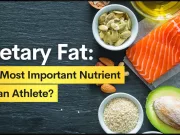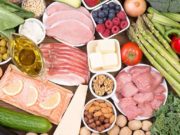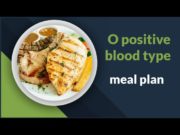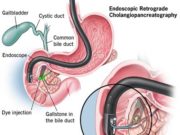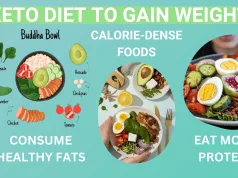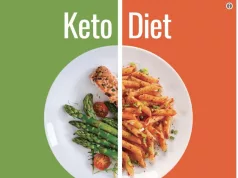Building muscle and losing weight at the same time – a seemingly impossible feat, right? Think of it like trying to juggle chainsaws while riding a unicycle. But hold on, because with the right knowledge and a sprinkle of willpower, you can actually achieve this seemingly impossible goal.
It’s all about understanding the science behind it, crafting a strategic plan, and embracing the journey. So, are you ready to transform your body and defy the laws of physics? Let’s dive in!
This journey requires a delicate balance between building muscle and burning fat. We’ll explore how to fuel your body with the right nutrients, sculpt your physique with targeted workouts, and conquer the mental hurdles that often come with such a transformation.
Get ready for a thrilling ride as we unravel the secrets to achieving this remarkable feat.
The Science Behind It
Building muscle and losing weight simultaneously, often referred to as “body recomposition,” is a challenging yet achievable goal. It involves a delicate balance of creating an anabolic (muscle-building) environment while simultaneously promoting a catabolic (fat-burning) state. This process requires understanding the intricate interplay of hormones, energy expenditure, and nutrient utilization.
Hormonal Influence
Hormones play a crucial role in both muscle growth and fat loss.
Building muscle and losing weight simultaneously? It’s like trying to herd cats and make them do synchronized swimming – possible, but a real challenge. If your metabolism’s acting more like a sloth than a cheetah, you might need a little extra help to get those calories burning.
Check out How to lose weight with a slow metabolism and boost energy for some tips. Once you’ve got that energy flowing, you’ll be lifting weights like a champ and shedding pounds like a snake shedding its skin.
- Testosterone:This anabolic hormone is primarily associated with muscle building. It stimulates protein synthesis, which is essential for muscle repair and growth. Higher testosterone levels generally lead to increased muscle mass and strength.
- Growth Hormone:This hormone, produced by the pituitary gland, promotes growth and development, including muscle growth. It also helps regulate fat metabolism and can contribute to fat loss.
- Cortisol:This hormone, often referred to as the “stress hormone,” can have both anabolic and catabolic effects. While it can aid in muscle repair, excessive cortisol levels can lead to muscle breakdown and fat storage. Maintaining a healthy cortisol balance is crucial for achieving body recomposition.
Building muscle and losing weight simultaneously? It’s like trying to juggle chainsaws while riding a unicycle – impressive, but definitely not for the faint of heart! The key is to create a sustainable plan that prioritizes both goals. For long-term success, check out these Effective strategies for long-term weight loss and maintenance , which can help you navigate the tricky terrain of calorie management and exercise.
Remember, building muscle and losing weight isn’t a sprint, it’s a marathon – and you’ll need the right fuel to keep going strong!
Energy Requirements
The energy requirements for building muscle and losing weight are distinct but interconnected.
- Muscle Building:Building muscle requires a surplus of energy to fuel protein synthesis and muscle growth. This means consuming more calories than you burn. The exact caloric surplus needed varies depending on individual factors like age, activity level, and training intensity.
- Weight Loss:Losing weight requires a calorie deficit, meaning you burn more calories than you consume. This can be achieved through increased physical activity and/or reducing calorie intake. A significant calorie deficit can hinder muscle growth, as the body may start breaking down muscle tissue for energy.
Nutrition for Muscle Growth and Fat Loss: Building Muscle And Losing Weight At The Same Time
Achieving both muscle growth and fat loss simultaneously can be challenging, but it’s definitely achievable with a strategic approach to nutrition. The right balance of macronutrients, coupled with the right foods, is key to fueling your workouts and supporting your body’s recovery.
Macronutrient Balance for Muscle Growth and Fat Loss
The foundation of a successful nutrition plan for muscle growth and fat loss lies in balancing your macronutrients – protein, carbohydrates, and fats.
- Protein: Protein is essential for muscle repair and growth. Aim for 1.6-2.2 grams of protein per kilogram of body weight per day. This translates to roughly 120-160 grams of protein for a 150-pound individual.
- Carbohydrates: Carbohydrates provide energy for your workouts and help replenish glycogen stores. Choose complex carbohydrates like whole grains, fruits, and vegetables. Aim for 2-3 grams of carbohydrates per kilogram of body weight per day.
- Fats: Healthy fats are crucial for hormone production and cell function. Focus on unsaturated fats from sources like avocado, nuts, and olive oil. Aim for 0.5-1 gram of fat per kilogram of body weight per day.
Choosing Nutrient-Rich Foods
To maximize your results, it’s crucial to choose foods that are both nutrient-dense and support your goals. Here are some tips for making smart food choices:
- Prioritize lean protein sources: Include chicken breast, fish, lean beef, tofu, and beans in your diet.
- Choose complex carbohydrates: Opt for whole grains, brown rice, quinoa, sweet potatoes, and fruits.
- Incorporate healthy fats: Include avocado, nuts, seeds, olive oil, and fatty fish like salmon.
- Load up on vegetables: Aim for a variety of colorful vegetables in every meal.
- Hydrate effectively: Drink plenty of water throughout the day to support muscle function and overall health.
Healthy Snack Options
Snacking strategically can help prevent cravings and keep your energy levels stable. Here are some healthy snack ideas:
- Greek yogurt with berries: Provides protein, calcium, and antioxidants.
- Apple slices with almond butter: A combination of healthy fats and fiber.
- Hard-boiled eggs: A great source of protein and nutrients.
- Mixed nuts and seeds: A mix of healthy fats, protein, and fiber.
- Vegetable sticks with hummus: A low-calorie snack with protein and fiber.
Exercise Strategies
Combining resistance training and cardio is the key to building muscle and losing weight simultaneously. This approach helps you burn calories while building lean muscle mass, leading to a more sculpted physique and improved metabolism.
Workout Routine
A well-structured workout routine should incorporate both resistance training and cardio exercises. Here’s a sample routine you can follow:
- Resistance Training:3-4 days per week, focusing on major muscle groups (legs, back, chest, shoulders, arms). Choose exercises like squats, deadlifts, bench press, rows, and overhead presses.
- Cardio:3-5 days per week, including activities like running, swimming, cycling, or brisk walking. Aim for at least 30 minutes of moderate-intensity cardio per session.
Progressive Overload
Progressive overload is the principle of gradually increasing the demands on your muscles over time. This is crucial for muscle growth, as it forces your body to adapt and build more muscle tissue. You can implement progressive overload by:
- Increasing weight:Gradually add more weight to your resistance training exercises.
- Increasing reps:If you can easily complete all reps, increase the number of repetitions per set.
- Decreasing rest time:Shorten the rest periods between sets to challenge your muscles further.
- Changing exercises:Switch to more challenging variations of your current exercises.
Rest and Recovery
Rest and recovery are as important as exercise itself for muscle building and weight loss. Adequate rest allows your muscles to repair and rebuild after strenuous activity, leading to muscle growth. It also helps reduce the risk of injuries.
- Sleep:Aim for 7-9 hours of quality sleep each night. Sleep is essential for muscle recovery and hormone regulation.
- Active Recovery:Engage in low-impact activities like walking, stretching, or yoga on your rest days. This helps improve blood flow and reduce muscle soreness.
- Nutrition:Prioritize a balanced diet rich in protein, complex carbohydrates, and healthy fats to fuel your workouts and aid in recovery.
Common Challenges and Solutions
Combining muscle growth and weight loss is like trying to juggle flaming chainsaws and a unicycle: possible, but not without its challenges. The two goals often have conflicting nutritional and exercise requirements, making it a balancing act. Here, we explore common hurdles and effective strategies to navigate this journey.
Overcoming Plateaus
Plateaus are a common occurrence in both muscle building and weight loss. They happen when your body adapts to your current training and diet, resulting in a halt in progress. To break through these plateaus, consider the following strategies:
- Increase Training Intensity:If you’ve been lifting the same weights for weeks, it’s time to challenge your muscles. Increase the weight, reps, or sets, or try new exercises to stimulate muscle growth. This can also boost your metabolism and help you burn more calories.
- Modify Training Volume:Sometimes, changing the volume of your training can be effective. If you’ve been lifting heavy weights, try reducing the weight and increasing the reps. This can help you build endurance and burn more calories.
- Adjust Nutrition:If you’ve been stuck in a plateau, it’s worth reviewing your diet. You may need to increase your protein intake to support muscle growth or decrease your calorie intake to promote weight loss. Make sure you’re consuming enough calories to fuel your workouts and support muscle recovery.
- Incorporate HIIT:High-intensity interval training (HIIT) can be a powerful tool for breaking through plateaus. This type of training involves short bursts of intense exercise followed by brief rest periods. HIIT can boost your metabolism, increase calorie burn, and improve your overall fitness.
The Importance of Consistency and Discipline
Consistency and discipline are the cornerstones of long-term success in any fitness journey. Building muscle and losing weight simultaneously requires a commitment to a specific routine, which can be challenging at times.
“Consistency is key. It’s not about perfection, it’s about making progress, even if it’s just a little bit each day.”
- Set Realistic Goals:Aim for small, achievable goals rather than trying to transform your body overnight. This can help you stay motivated and prevent burnout.
- Find a Support System:Surround yourself with people who support your fitness goals. This could include a workout buddy, a personal trainer, or a supportive community.
- Track Your Progress:Regularly track your workouts, nutrition, and progress. This can help you stay accountable and identify areas for improvement.
- Celebrate Your Successes:Acknowledge your progress and celebrate your achievements. This can help you stay motivated and maintain your momentum.
Lifestyle Factors

You’ve nailed the science, the nutrition, and the exercise. But building muscle and losing fat isn’t just about what you do in the gym or the kitchen; it’s also about how you live your life. Your lifestyle plays a crucial role in your success, impacting everything from your body’s ability to recover from workouts to your stress levels, which can directly affect your progress.
Sleep Quality
Getting enough quality sleep is essential for both muscle recovery and fat loss. While you’re sleeping, your body releases hormones that help repair muscle tissue and promote growth. Not getting enough sleep can lead to increased cortisol levels, a stress hormone that can actually break down muscle tissue and make it harder to lose fat.
Aim for 7-9 hours of quality sleep per night.
Building muscle and losing weight simultaneously? It’s like trying to teach a cat to play the piano – possible, but requires patience and a lot of treats! The key is finding the right balance of protein and calories, which brings us to the burning question: Can I still eat my favorite foods while losing weight ?
The answer, my friend, is not a simple yes or no. It’s more like a “maybe, but with some smart substitutions and portion control.” After all, building muscle takes dedication, and who can resist a good cheat meal every now and then?
Just remember, moderation is key – unless we’re talking about protein shakes, those you can have in abundance!
Stress Management, Building muscle and losing weight at the same time
Stress can have a negative impact on your body’s ability to build muscle and burn fat. When you’re stressed, your body releases cortisol, which can lead to increased appetite, cravings for unhealthy foods, and decreased muscle growth.
- Find healthy ways to manage stress, such as exercise, meditation, yoga, or spending time in nature.
- Prioritize your sleep and ensure you’re getting enough restful hours.
- Practice relaxation techniques like deep breathing or progressive muscle relaxation.
- Learn to say no to commitments that add unnecessary stress to your life.
Hydration
Water is essential for many bodily functions, including muscle recovery, fat loss, and overall health. It helps transport nutrients to your muscles, flush out waste products, and regulate your body temperature.
- Drink plenty of water throughout the day, especially before, during, and after exercise.
- Keep a water bottle with you at all times and refill it regularly.
- Listen to your body and drink water when you feel thirsty.
Final Thoughts
Building muscle and losing weight simultaneously is not a quick fix, but rather a lifestyle change. It’s about embracing the process, celebrating milestones, and learning to appreciate the journey. Remember, consistency is key. Stay committed to your goals, adapt your strategies as needed, and enjoy the incredible transformation you’ll experience along the way.
So, go forth and conquer your fitness goals, one muscle-building, fat-burning step at a time!
FAQ Overview
Can I really build muscle and lose weight at the same time?
Absolutely! It’s achievable, but it requires a tailored approach to nutrition and exercise. It’s not about doing everything at once, but about finding the right balance.
How much weight can I realistically lose while building muscle?
The rate of weight loss and muscle gain varies depending on individual factors. It’s best to aim for a sustainable rate of 1-2 pounds of weight loss per week while focusing on building muscle mass.
What if I hit a plateau?
Plateaus are common, but they’re not a sign to give up! It’s time to reassess your approach. Consider increasing your workout intensity, tweaking your diet, or adding new exercises to challenge your body.




